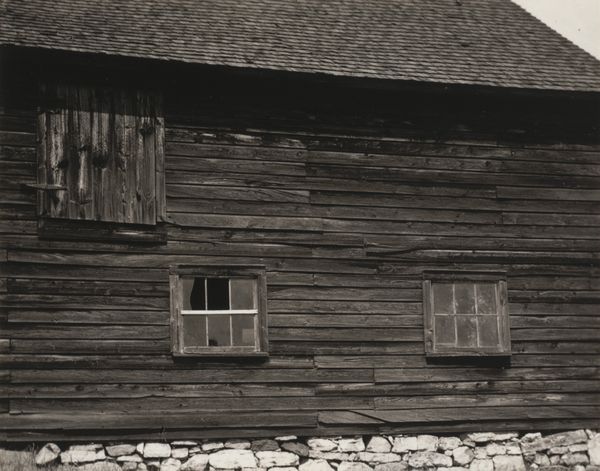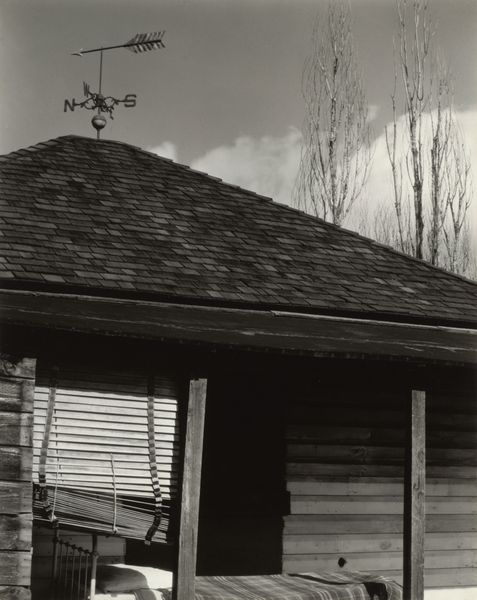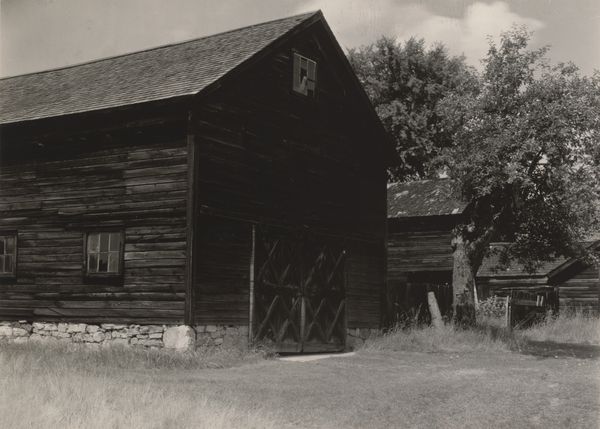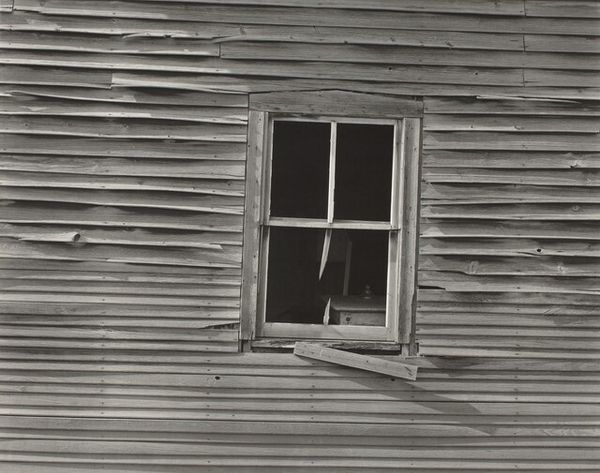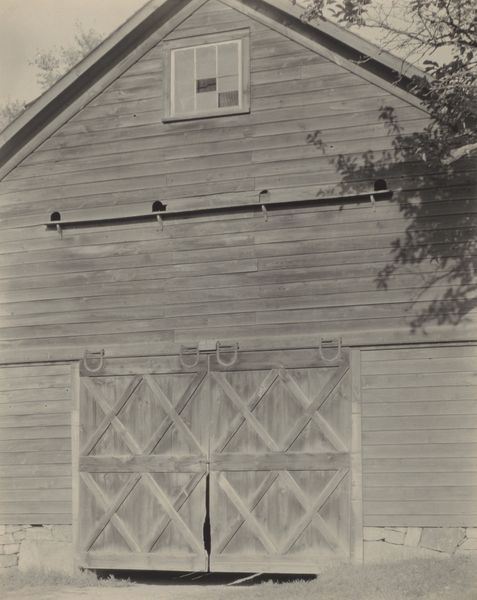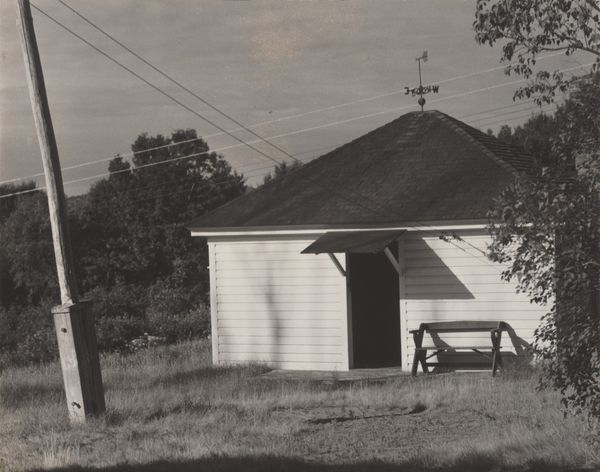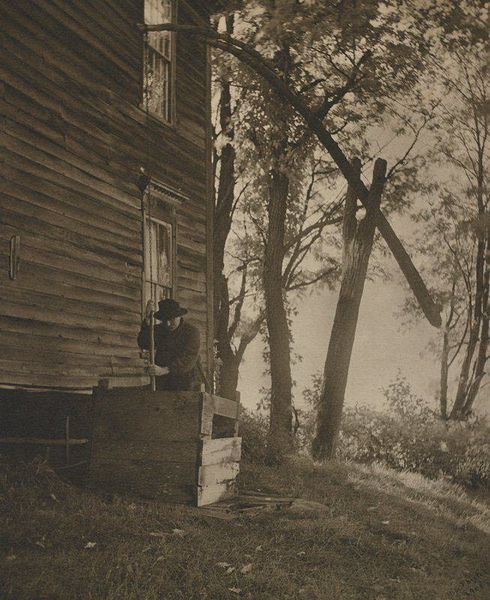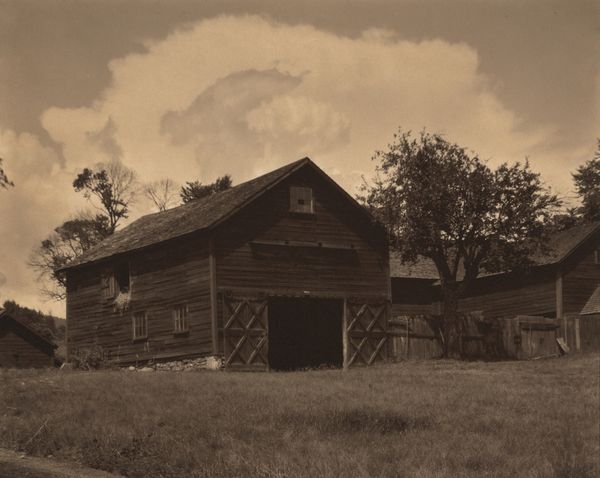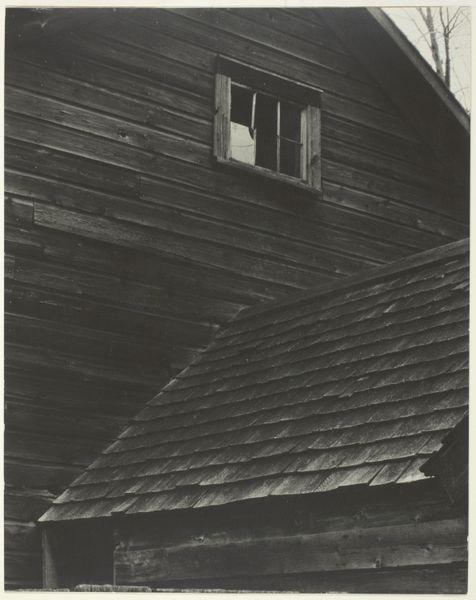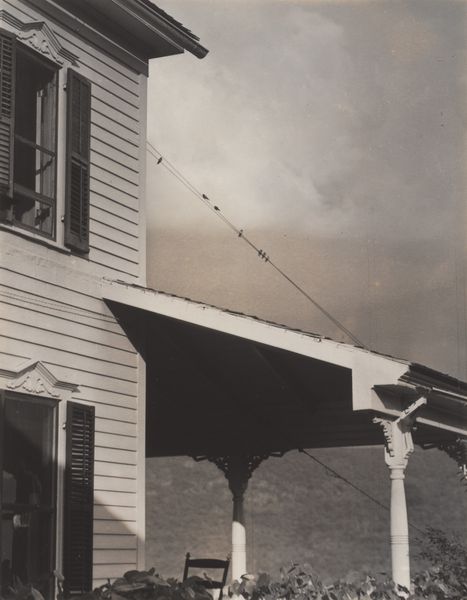
photography
#
landscape
#
photography
#
monochrome photography
#
modernism
#
monochrome
Dimensions: sheet (trimmed to image): 19.3 × 24.5 cm (7 5/8 × 9 5/8 in.) mount: 56.5 × 46.3 cm (22 1/4 × 18 1/4 in.)
Copyright: National Gallery of Art: CC0 1.0
Curator: Before us is Alfred Stieglitz's "Barn—Lake George," a photograph dating to 1922. Editor: My immediate response is a kind of melancholic intimacy. The tight crop and stark contrast create a feeling of enclosure and quiet contemplation. It speaks of rural life in a way that feels both nostalgic and somewhat stark. Curator: Indeed. Stieglitz's formalist approach is evident here. The composition is tightly controlled, focusing on the interplay of light and shadow across the wooden textures. The lines of the planks, the window frame, they all contribute to a structured whole. One could apply structuralist theory here. Note the window as signifier of framing. Editor: And I see the potential for a very different reading! This barn, likely on land that underwent Indigenous removal, now represents a vanishing agrarian lifestyle. We need to consider what it means to capture a forgotten place in a society grappling with industrialization. There's a politics of looking here. Curator: But the photograph's true success is the materiality itself! Consider the tonal range he coaxes from the photographic medium, each groove and imperfection highlighted through meticulous darkroom practice. That is Stieglitz's triumph. Editor: Perhaps. But it’s also about how the myth of American self-reliance is caught in the shadows and cracks of a forgotten window. I'd like to know who toiled and lived within the space—it’s hard not to view it as an unintentional elegy for those rendered invisible. The scale of what is presented and left unsaid evokes both intimacy and distance. Curator: So we arrive at our final thoughts then? My response is shaped primarily by a respect for Stieglitz’s dedication to the photographic arts, while also viewing this from a formalist perspective in its play of shape and materiality. Editor: My own response comes down to an artwork as a site for social memory. I see a beautiful surface hinting at deeper, unspoken narratives. These conversations are not about art alone, but how it reflects culture at large.
Comments
No comments
Be the first to comment and join the conversation on the ultimate creative platform.

